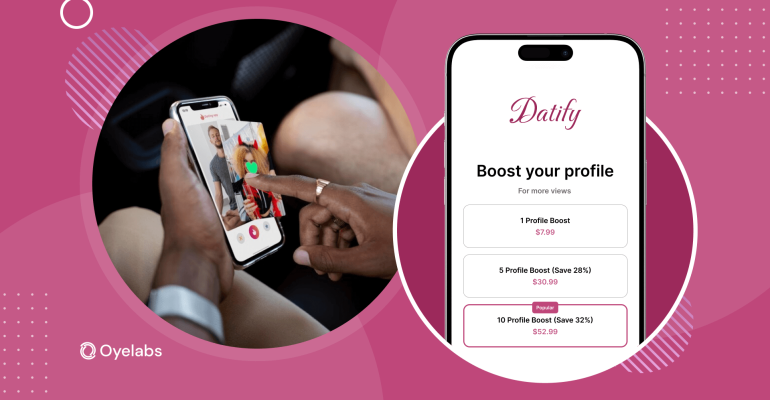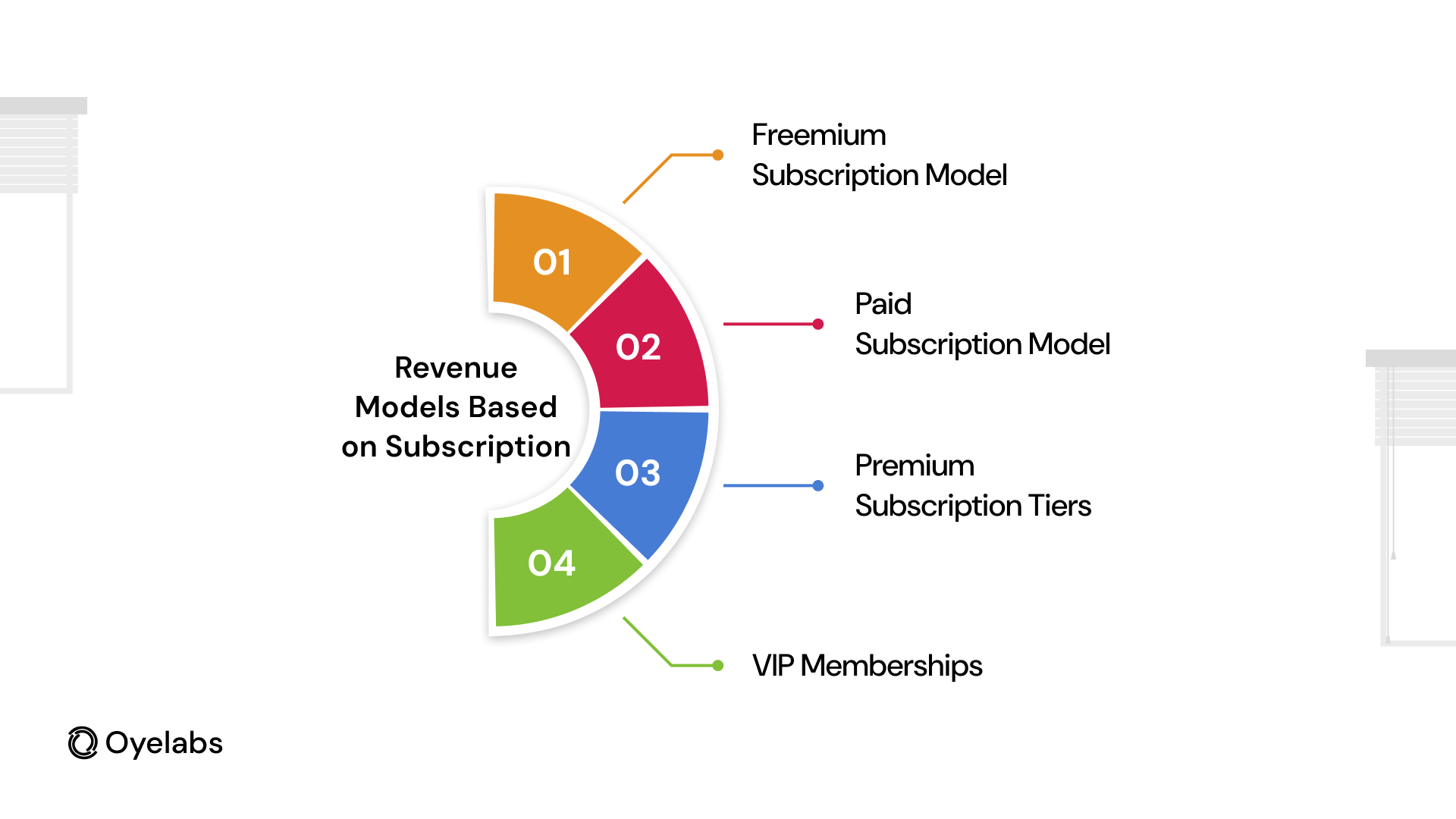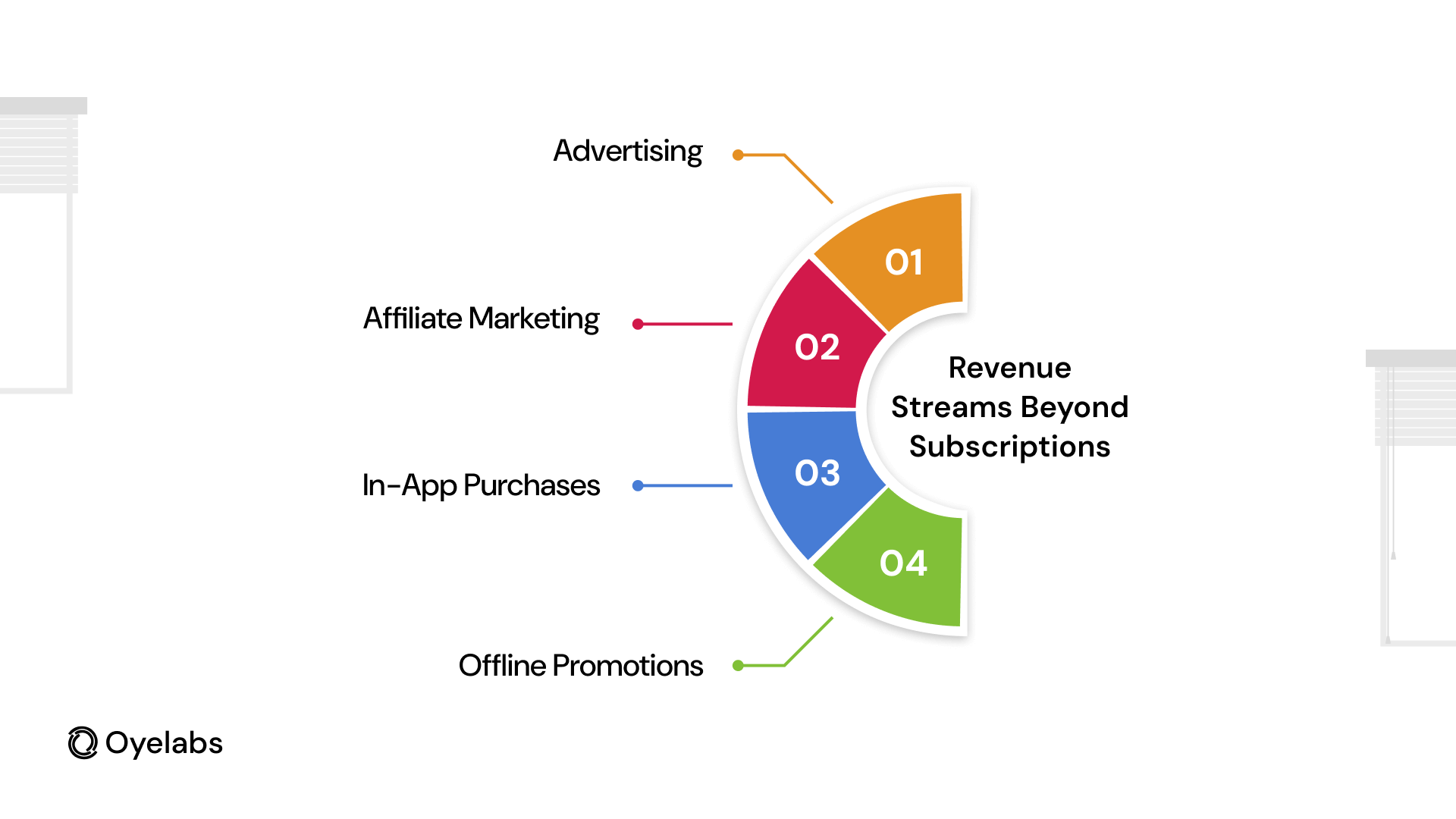Revenue Models of Popular Dating Apps: How They Make Money

Revenue Models of Popular Dating Apps: How They Make Money
Last Updated on July 12, 2025
Once seen as a taboo, online dating has blossomed into a vibrant and essential part of modern relationships. In just a few years, the dating app industry has transformed, with revenues soaring from $1.69 billion in 2015 to an impressive $3.08 billion by 2020. By 2025, this figure is expected to surpass $11 billion, fueled by an annual growth rate of 7.22%. Much of this success can be attributed to trailblazers like Tinder, which have mastered the art of user-friendly design and engaging features that keep users coming back for more.
But how do these dating apps turn this popularity into profit? For anyone looking to dive into the world of dating app development, understanding the various revenue models—ranging from subscription plans and in-app purchases to targeted advertising—is crucial. These monetization strategies not only sustain user engagement but also drive impressive profit margins.
Curious about the financial aspects of launching your own dating app? Discover more in our detailed guide on “How Much Does it Cost to Build a Dating App?”
Dating App Revenue Models Based on Subscription
Freemium Subscription Model
The freemium subscription model has emerged as a leading strategy among dating apps, providing users with complimentary access to fundamental features like swiping and messaging. However, it restricts more advanced functionalities to those who opt for a paid subscription. This approach not only attracts a broad user base but also converts a portion of free users into paying customers over time.
For instance, Tinder operates on this model by permitting users to swipe a limited number of times each day for free. Users looking to increase their chances of finding matches can subscribe to Tinder Plus, Tinder Gold, or Tinder Premium. These premium options offer various functionalities, including unlimited swipes, the ability to view who liked their profile, and global matching capabilities, allowing users to connect with others in different regions. As of 2024, Tinder boasts 75 million monthly active users, with approximately 8 million paying subscribers, indicating a strong conversion rate from free to premium memberships.
Bumble adopts a similar model, with a unique twist that empowers women to initiate conversations. While free users can swipe and match, those with premium subscriptions gain access to features like Spotlight, which enhances their profile visibility, and Bumble Boost, offering unlimited swipes and extended matching durations. This engaging approach keeps users invested in the app and incentivizes upgrades for faster results.
Paid Subscription Model
In contrast to the freemium model, the paid subscription model requires users to pay upfront for access to the platform’s features. This method is particularly appealing to users in search of serious relationships, as it helps filter out casual daters and minimizes the presence of fake profiles. Notable platforms such as eHarmony and Match.com exemplify this model, targeting users seeking more meaningful connections.
eHarmony provides a tiered subscription service, granting users access to enhanced features such as detailed personality assessments and compatibility-based matching. Depending on the subscription length, membership costs typically range from $35.90 to $65.90 monthly. Similarly, Match.com allows users to explore the app for free during an initial trial period, after which continued access necessitates payment.
Premium Subscription Tiers
Many dating applications have introduced premium subscription tiers as an additional revenue stream. These tiers offer users access to advanced features, including improved profile visibility, priority in search results, and extended reply times for matches. Hinge, which focuses on fostering meaningful connections, features a premium membership called Hinge Preferred, enabling users to view who liked their profile before matching.
Additionally, platforms like Tinder and Bumble leverage their popularity by offering tiered subscription options, such as Tinder Gold and Tinder Platinum, or Bumble Premium. These premium levels not only enhance the user experience but also deliver a more personalized dating journey, making the platform increasingly appealing and rewarding for paying users.
VIP Memberships
To further enhance user experience, many dating apps have integrated VIP memberships, offering exclusive features and benefits that elevate the dating journey. VIP memberships typically provide premium functionalities, including heightened profile visibility, priority access to potential matches, and personalized matchmaking assistance.
For instance, Hinge presents a VIP tier known as Hinge Preferred. This membership allows users to see who liked their profile before making a match, thus promoting more meaningful interactions and simplifying the dating process. By incorporating such premium features, dating apps can attract users who are willing to invest more for a tailored experience, making the platform not only more engaging but also more lucrative.
Additional Revenue Streams Beyond Subscriptions
While subscriptions represent a key revenue stream for most dating apps, many platforms have expanded their income-generating strategies to build a more sustainable and diversified business model. These additional revenue sources cater to both free and premium users, ensuring consistent growth in profits.
Advertising
Given their extensive user base, dating apps are prime platforms for advertisers looking to target specific demographics based on users’ age, location, or interests. This form of advertising appeals particularly to industries such as travel, luxury goods, and dining, which align well with the habits and interests of dating app users.
Tinder, for instance, integrates native advertisements within the app in the form of video ads, banner ads, and sponsored profiles, seamlessly blending promotional content into users’ browsing experience. Although premium users are spared from seeing ads, free users are the main audience for these campaigns, which creates a dual revenue source through subscription fees and ad income.
Also Read: How to Create a Successful Dating App?
Affiliate Marketing
Another effective revenue strategy involves affiliate marketing, where dating apps collaborate with external businesses to promote complementary products or services. Through this, apps can earn commissions on referrals based on the traffic or purchases generated by the partnership.
An example could be OkCupid, which might partner with a relationship coach or dating course provider. By offering such promotions within the app, not only does the app enhance the user experience, but it also creates an additional income stream without increasing subscription fees.
In-App Purchases
One-Time Purchases
In-app purchases offer a lucrative revenue model for dating apps, allowing users to invest in virtual goods that enhance their experience. Users can buy in-app currencies, SuperLikes, and Boosts to increase visibility during peak swiping hours. For example, Tinder generates significant revenue from these one-time purchases, enabling users to stand out more effectively in the dating game.
Apps like Bumble and Hinge also offer their versions of in-app currencies—Bumble Coins and Hinge Roses—allowing users to tailor their dating experience according to their preferences without committing to ongoing subscriptions. This pay-per-use model enriches user engagement and provides effective monetization opportunities.
Fast Profile Verification
Some platforms, such as The League, offer premium services that allow users to fast-track their profile verification process. This feature appeals to users who want to boost their credibility on the platform, as verified profiles typically gain more attention and credibility. By offering expedited verification, apps can monetize a process that many users value, especially those looking for serious relationships.
Virtual Gifts
Virtual gifts represent another innovative way for dating apps to earn revenue. Users can purchase digital tokens or gifts—such as virtual flowers, chocolates, or other symbols of affection—to send to potential matches. Tinder and Bumble both allow users to send virtual gifts, which enhances interaction and engagement on the platform while adding an additional layer of personalization to the dating experience.
Offline Promotions
In addition to online engagement, some dating platforms leverage offline events to create additional revenue and foster deeper user interaction. Tinder, for example, has organized exclusive in-person events that help build community engagement and drive app usage. These events also open up sponsorship opportunities and brand collaborations, offering an additional way to monetize their platform beyond traditional subscriptions.
Launch Your Own Dating App with Oyelabs Today!
Choosing Oyelabs for your dating app development means opting for expertise and innovation. We specialize in creating tailored dating platforms, including a comprehensive Tinder clone that caters to modern user demands. Our end-to-end services cover every step of the development process, ensuring a seamless journey from concept to launch. By working closely with you, we integrate features that resonate with your target audience, boosting user engagement and retention. With our extensive experience in the dating app space, we empower you to navigate the complexities of development and create a unique platform that stands out in a crowded market.
Contact For Building Your On-demand Home Services App
Conclusion
The dating app industry is thriving, propelled by innovative revenue models and the ability to cater to various user preferences. From freemium and subscription-based models to affiliate marketing and in-app purchases, platforms like Hinge, Bumble, tinder, and eHarmony lead the way in monetizing their extensive user bases. As competition intensifies, a well-defined revenue strategy becomes essential for app developers. To navigate the complexities of app development and ensure your platform meets user needs, contact Oyelabs. Whether focusing on casual connections or long-term relationships, the opportunities in this dynamic market are vast and rewarding.





